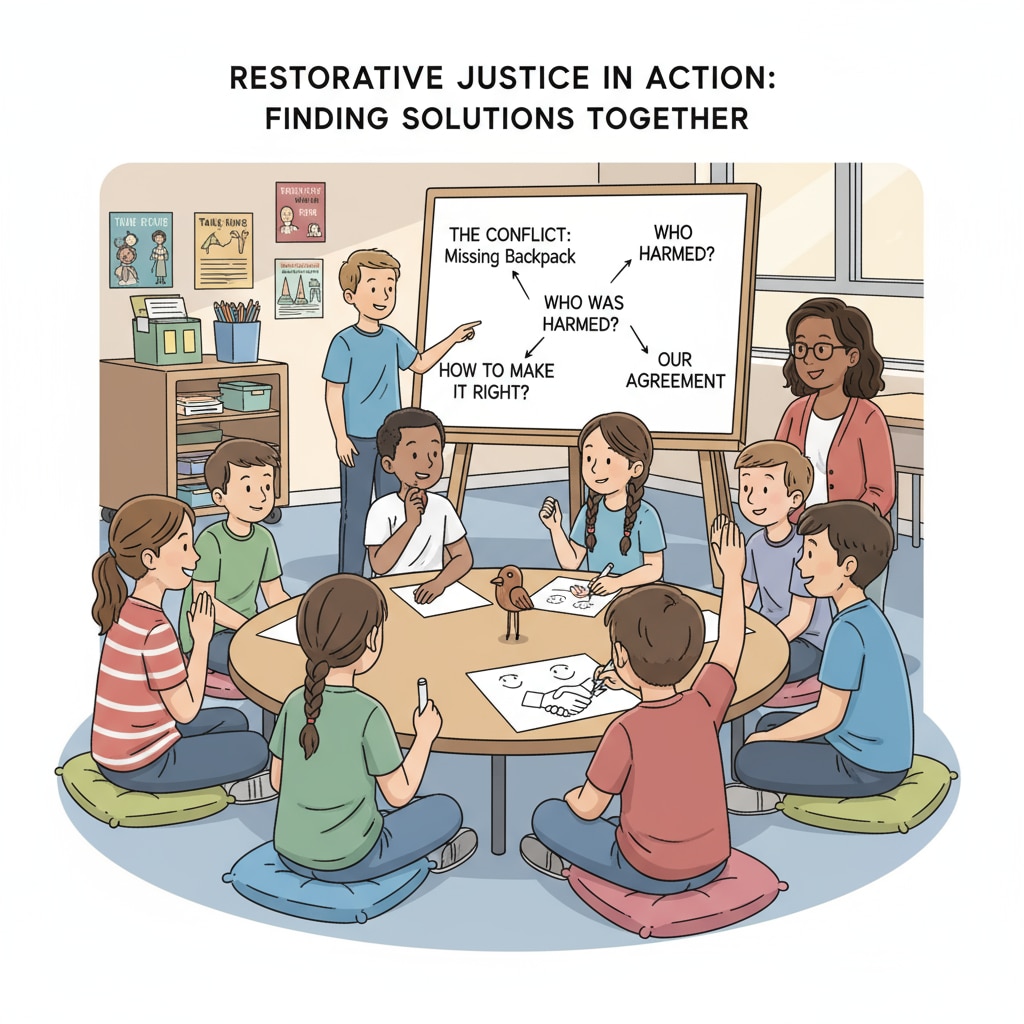Restorative justice, educational resources, and school implementation are crucial aspects in the realm of K12 education. In recent years, there has been a growing interest in applying restorative justice practices in schools to create a more positive and inclusive learning environment.

This approach focuses on repairing harm, building relationships, and promoting accountability among students.
The Concept of Restorative Justice in K12 Education
Restorative justice in K12 education is a departure from traditional punitive measures. Instead of simply punishing students for misbehavior, it aims to address the underlying causes and restore the relationships affected by the incident. According to Wikipedia’s entry on restorative justice, restorative justice involves bringing together the affected parties, such as the victim, the offender, and the community (in this case, the school community), to discuss the impact of the behavior and find ways to make amends. For example, if a student bullies another, restorative justice would involve a conversation where the bully understands the harm caused and takes steps to repair the relationship.
Challenges and Opportunities in Title 1 Schools
Title 1 schools, which serve a high percentage of low-income students, present unique challenges and opportunities when implementing restorative justice. These schools often face resource constraints, but at the same time, restorative justice can be a powerful tool to build a sense of community and reduce disciplinary issues. For instance, limited funding might make it difficult to provide comprehensive training for teachers on restorative justice practices. However, as stated in Britannica’s education section, the need for a more inclusive and supportive environment in Title 1 schools makes restorative justice an even more valuable approach. By implementing it, these schools can create a culture where students feel valued and supported.

One of the main challenges is changing the mindset of teachers and staff who are accustomed to traditional disciplinary methods. Educators need to be trained to facilitate restorative justice processes effectively. This includes learning how to conduct circle discussions, mediate conflicts, and help students take responsibility for their actions.
In addition, building trust among students, teachers, and parents is essential. In Title 1 schools, where there may be historical issues or mistrust, it takes time and effort to establish an environment where everyone feels comfortable participating in restorative justice initiatives.
Educational Resources for Implementing Restorative Justice
There are various educational resources available for schools looking to implement restorative justice. Online platforms offer training modules, lesson plans, and case studies. For example, some websites provide step-by-step guides on how to start a restorative justice program in a school. There are also books written by experts in the field that offer in-depth insights into restorative justice practices in educational settings. These resources can help educators understand the principles, techniques, and benefits of restorative justice.
Professional development workshops and conferences are another valuable resource. These events allow educators to network with others who are implementing restorative justice, share experiences, and learn from best practices. Some workshops even provide hands-on training, enabling teachers to practice facilitating restorative justice processes.
Success Stories and Lessons Learned
Many schools have successfully implemented restorative justice and have seen positive results. Some schools have reported a reduction in disciplinary referrals, improved student behavior, and a more positive school climate. For example, a school in a urban area implemented restorative justice circles and saw a significant decrease in student fights. The students learned to communicate better, understand each other’s perspectives, and resolve conflicts in a more peaceful way.
From these success stories, educators can learn important lessons. First, communication is key. Clear and open communication among all stakeholders – students, teachers, parents – is essential for the success of restorative justice. Second, consistency in implementation is crucial. Restorative justice practices need to be applied consistently across the school to be effective.
Readability guidance: In this article, we have explored the concept of restorative justice in K12 education, especially in Title 1 schools. We have discussed the challenges, opportunities, available resources, and success stories. By implementing restorative justice, educators can create a more inclusive and supportive school culture. Remember to use short paragraphs and lists to summarize key points, control the proportion of passive voice and long sentences, and add transitional words like however, therefore, in addition, for example, and as a result throughout the text.


